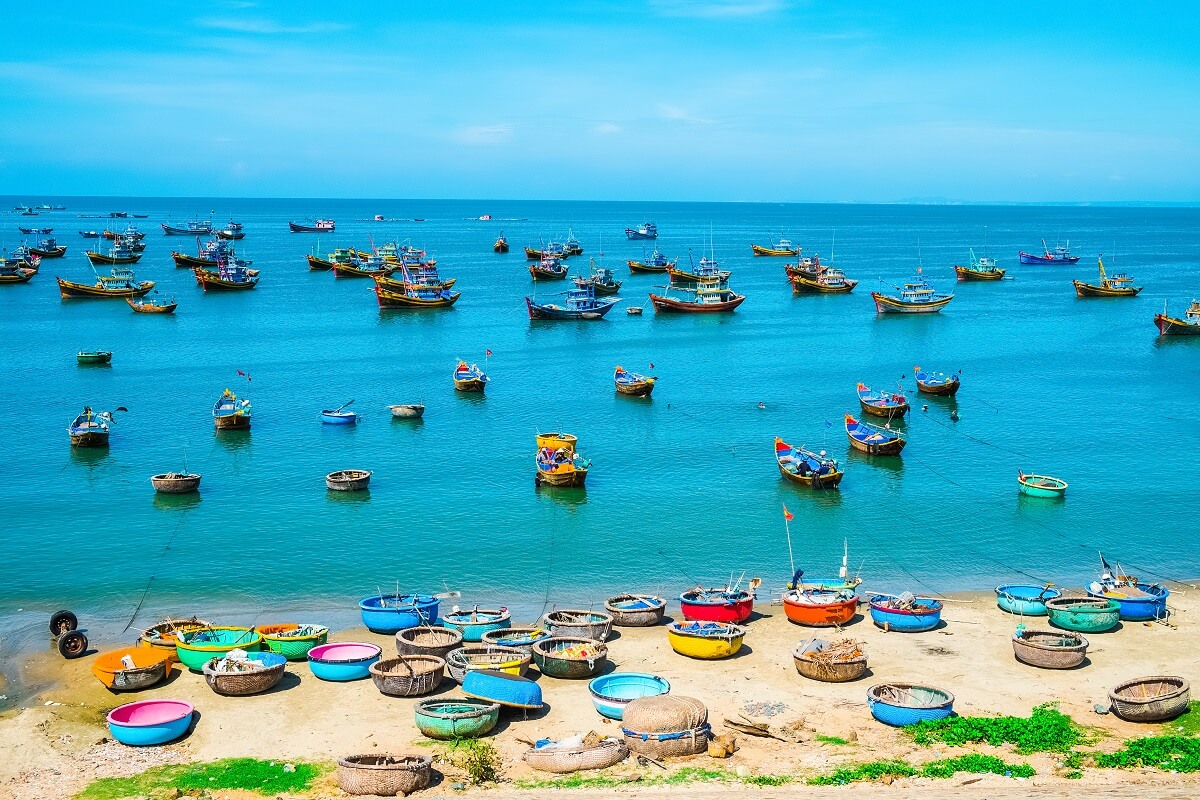
The peak beach tourism season coincides with the time when storms and tropical depressions are most active.
In reality, many storms have very complex paths, such as moving inland and then back out to sea before returning to land again. Similarly, there are consecutive storms that occur, which experts refer to as the “storm-on-storm” phenomenon. There are times when consecutive storms occur over a period of one month, with a storm arriving every weekend (Saturday and Sunday).
This shows that the rainy storm season poses many unpredictable risks. Meanwhile, the peak of beach tourism coincides with the period when storms are usually most active (July, August, September, and October). Moreover, many families tend to book tours very early, so it is easy to encounter risks when facing unfavorable weather. However, don’t let the fear of storms change your beach vacation plans, as you will miss out on the opportunity to immerse yourself in the beautiful beaches of Phu Quoc, Con Dao, Phu Quy, Cat Ba, Ha Long, and more. Being proactive and maintaining a relaxed mindset is what the experts recommend.
Research your destination thoroughly: Climate is an important factor in choosing a destination and preparing for a beach trip during the peak storm season. Consider the climate factors of your destination, including hours of sunshine, air temperature, rainfall, and the probability of storms occurring, averaged over the years. Additionally, get familiar with the means of transportation, the situation of ships at sea, and the activities that will take place during the tour. You can also look for information about similar destinations to make comparisons. Don’t forget to keep yourself updated with the latest information about your destination so that you can make the right decisions, such as canceling tickets or changing schedules when there is a risk of unfavorable weather conditions.

Make sure you thoroughly research climate-related information before booking your trip.
Prepare your luggage for the rainy storm season when traveling: If you choose to travel to the beach during this period, you should be well prepared. Basic medical supplies such as a thermometer and fever medication are essential. You should also pack 1-2 extra sets of clothes in case you get stranded due to storms, and bring some extra dry food to ensure you have enough provisions in unexpected and force majeure conditions.
Comply with safety rules: Refrain from or stop engaging in beach bathing, sunbathing, and playing sports games on the beach when there are warnings. Only resume these activities when the authorities allow it. Especially during storms, follow the safety rules, and stay in contact with the authorities to ensure timely information and the best assistance if needed.

During storms and tropical depressions, it is crucial to adhere to the safety rules set by the authorities.
Maintain a positive and cheerful attitude: When there is a storm, the sea becomes turbulent, and the high waves prevent you from engaging in beach activities, sunbathing, or playing dynamic games on the beach. Worse still, you can’t participate in other outdoor activities due to heavy rain. Experts have pointed out that storms attract a large mass of humid air, resulting in heavy rainfall. The area of heavy rain usually lies on the right side of the storm’s path and typically occurs from about 12 hours before the storm makes landfall until 12 hours after. Most of the heavy rain caused by storms is concentrated within a radius of 100-200 km around the storm’s eye.

Maintain a relaxed attitude and enjoy your vacation, no matter what the circumstances.
Maintain a relaxed attitude to enjoy your vacation. You can still relax and experience indoor tourism. Sipping a cup of coffee, exploring local cuisine, or engaging in indoor activities are some suggestions for your beach vacation during stormy weather. Believe that, no matter the circumstances, you will have fascinating experiences.































